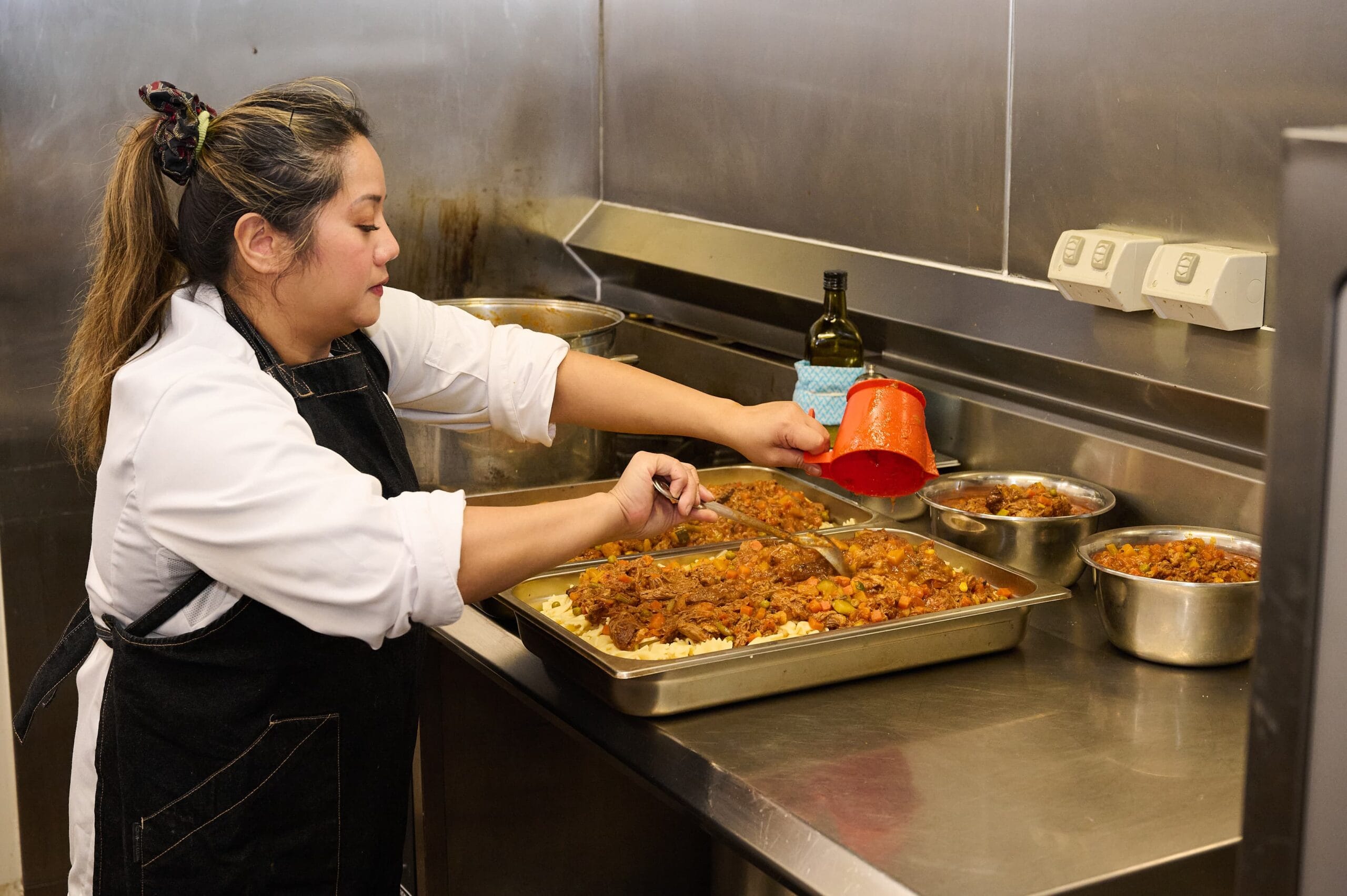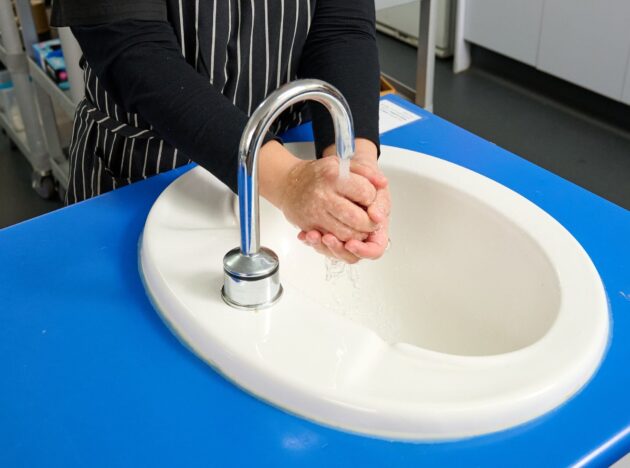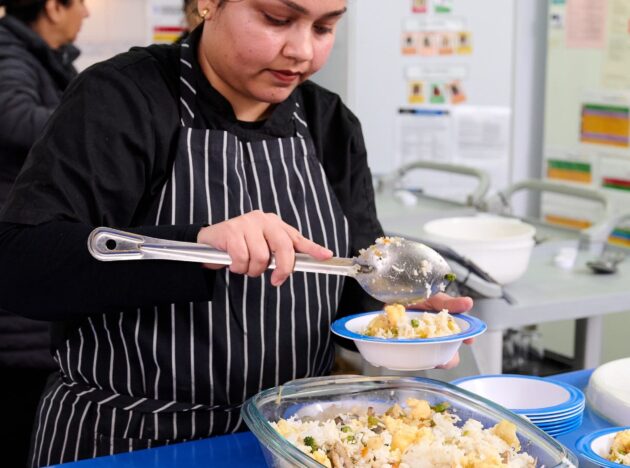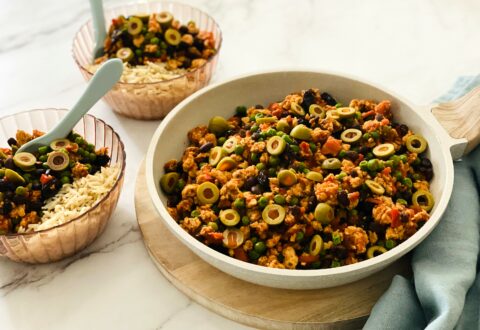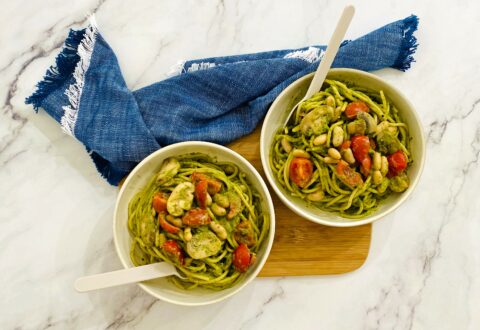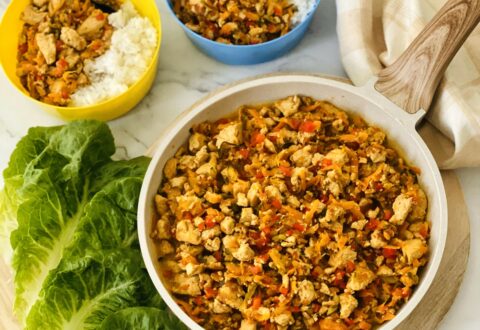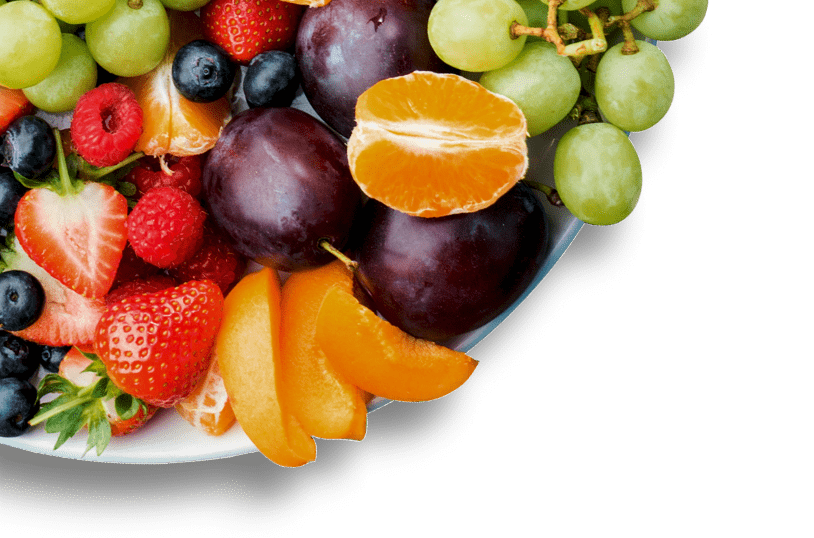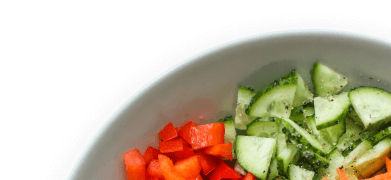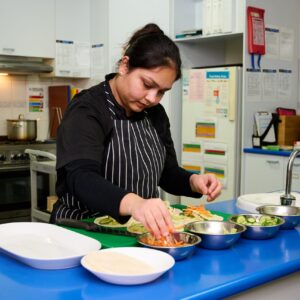Menu planning and recipe modification for food allergy and intolerance
It is important to make allergy free meals look and taste similar to meals served to the rest of the children at your service.

This resource is available as a downloadable file in following languages:
Key Information
- A centre may need to manage several food allergies when planning their menu.
- Some children have more than one food allergy. Different children can have allergies to different foods. A food that is appropriate for one child with food allergy, can be life-threatening for another.
- Many recipes can be changed for children with food allergies and still meet the Menu planning guidelines for long day care.
- It is not recommended that food allergens like cow’s milk, eggs and wheat are removed from the service. This is because they are important foods in a child’s diets. Instead, an “allergy aware” approach is recommended.
- An allergy aware approach means the centre has many risk management strategies in place to prevent a child being exposed to the food/s they are allergic to.
- This should include procedures for unexpected situations, such as having other staff trained in food allergen management for when the cook is on leave.
Providing food and drinks to children with multiple allergies
This fact sheet is for cooks and chefs working in children’s education and care.
All food allergies must be taken seriously, and staff should know how to manage an allergic reaction. For information and guidance about managing food allergy, see the National Allergy Council’s Best Practice guidelines for anaphylaxis prevention and management in children’s education and care.
For more information on preparing and serving food for children with food allergies, complete the National Allergy Council’s All about Allergens for Children’s education and care course and download the National Allergy Council’s All about Allergens for Children’s education and care booklet.
The Healthy Eating Advisory Service course, Managing allergies and other dietary requirements in children’s education and care, should then be completed. You will find a micro-module specific to recipe modification for multiple food allergies within this course.
Preparing food for children with multiple or different allergies
If you are preparing meals for several children with food allergies, plan the order in which you prepare meals so that one type of allergen does not contaminate another meal.
Preparing allergy meals away from other food preparation areas and at a separate time (before or after) other meals will help prevent cross contamination of food allergens. The National Allergy Council’s Preparing allergy meals safely in a separate space and separate time video explains how to do this.
Centres should have procedures in place to make sure the right food is given to the right child. The National Allergy Council’s video shows what you need to do to make sure the right meal is given to the right child at each meal and snack time.
Tools for managing meal preparation for multiple food allergies
When making foods for children with food allergies you need to know what is in your menu, use standard recipes and know which children will be in the centre on each day.
Using standard recipes, a food allergen menu matrix and a daily attendance sheet will help plan your menu.
| Standard recipe | Standard recipes are recipes that everyone follows exactly, no matter who is cooking. No changes. No additions. No ingredient substitutions. Download the National Allergy Council’s Standard Recipe template here. |
| Food allergen and menu matrix | A food allergen menu matrix is a chart that lists all the menu items and shows which common food allergens are present as ingredients or listed in the precautionary allergen statement in those menu items. This includes all foods and ingredients you buy, and anything you make from scratch using a standard recipe. Download the National Allergy Council’s Food Allergen Menu matrix template and watch a video on how to complete the menu matrix here. |
| Daily attendance sheet | A daily attendance sheet lists the name of each child with special dietary needs including allergies that is attending on that day and which meals and snacks they can have Download the National Allergy Council’s Daily Attendance Sheet template here. |
Recipe Modification for multiple food allergens
On the following pages, you will find three examples of how you can make changes to your recipes for children with multiple food allergies. Remember that it is not recommended that food allergens, such as eggs, milk, and wheat-based products, are removed or “banned” from the service. These foods provide important nutrients needed for children’s growth and development.
Spaghetti bolognese
The ingredients in the spaghetti bolognese recipe contain the following allergens:
- Wheat-based pasta – wheat, gluten, egg and soy
- Grated cheddar or parmesan cheese – cow’s milk, egg.
The table below provides an example of a recipe where individual ingredients can be swapped when serving the meal.
This recipe can be modified to be cow’s milk and wheat free. It does not contain egg.
| Allergens | Instead of.... | ...use these alternatives |
|---|---|---|
| Cow’s milk | Grated cheddar or parmesan cheese | Nutritional yeast (for the children who are allergic to cow’s milk) |
| Wheat | Wheat based pasta | Gluten free pasta (for the children who are allergic to wheat) |
| Egg and soy | Pasta that contains egg and soy | Use a pasta with no egg or soy in the ingredients or “may contain” statements |
| Egg | Grated parmesan cheese | Use a grated parmesan cheese with no egg in the ingredients or “may contain” statements |
Lasagne
The ingredients in the lasagne recipe contain the following allergens:
- instant lasagne sheets – wheat, gluten and egg
- ricotta cheese – cow’s milk
- grated parmesan or cheddar cheese – cow’s milk (check the grated cheese for egg).
Because this recipe is a bake, make a separate version for children with allergies. Once cooked, individually labelled portions can be frozen for the next time it is needed. Use the original recipe for children without allergies. This recipe can be modified to be cow’s milk, egg and wheat free.
| Allergens | Instead of | ...use these alternatives |
|---|---|---|
| Cow’s milk | Ricotta cheese | White sauce made with rice milk thickened with maize based corn flour |
| Cow’s milk | Parmesan or grated cheese | Nutritional yeast |
| Wheat | Wheat based lasagne noodles | Wheat free lasagne noodles or wheat free pasta spirals |
| Egg | Lasagne noodles with egg | Egg free lasagne noodles |
Pikelets
The ingredients in the pikelet recipe contain the following allergens:
- cow’s milk
- egg
- self-raising flour – wheat and gluten.
The table below provides an example of a recipe where food allergen alternatives can be used during the preparation process.
This recipe can be modified to be cow’s milk, egg and wheat free.
| Allergens | Instead of | ...use these alternatives |
|---|---|---|
| Cow’s milk | Cow’s milk | Plant based milk alternative, with at least 100 mg of calcium per 100 ml. For example: Soy milk Oat milk Rice milk |
| Egg | Eggs | Egg replacer or mashed banana for binding |
| Wheat | Self-raising flour | Gluten free self-raising flour (many brands available) |
Practical example of managing multiple food allergies
Below is an example of a child attending long day care who has an allergy to cow’s milk and egg. See below the menu this centre has created to accommodate for the child’s multiple allergies.
| Meal | Original recipe or food and drink items offered | Allergy friendly swap (for child with allergies) |
|---|---|---|
| Breakfast | Variety of cereals served with full cream cow’s milk | • Calcium fortified soy milk. Using soy milk as an alternative is confirmed by the child’s parents. |
| Morning Tea | Fresh fruit salad served with plain yoghurt | • Calcium fortified soy yoghurt. Using soy yoghurt as an alternative is confirmed by the child’s parents |
| Lunch | Spaghetti with meatballs served with a side salad | • Dried spaghetti – check the label to confirm it does not contain egg. • Commercial egg replacer used to bind the meatballs. (The egg is not the main source of protein in this meal) |
| Afternoon Tea | Vegetable platter with crackers and cheese | • As there are no suitable cheese replacements for children with cow’s milk allergy, offer a glass of calcium fortified soy milk instead of cheese for the child with allergies • Offer the child with allergies their own plate, rather than allowing self-serve with the other children. This can prevent children with allergies accidentally serving themselves a food they are allergic to and reduces the risk of cross contamination with their allergen. |
Storing, making, and serving food for children with food allergy
Children with food allergy can react to very small amounts of allergen in their food.
Make sure you have good food allergen management processes to prevent the risk of cross contamination from foods the child’s food allergy.
This includes:
- cleaning surfaces and equipment
- having separate equipment where needed, for example a separate toaster for wheat or gluten free bread.
- storing food safely for allergies
- preventing cross contamination of food allergens during cooking and serving
- washing hands or changing gloves in between handling different foods.
More helpful resources and information
For more information see the National Allergy Council’s All About Allergens training for Children’s education and care and All about Allergens for Children’s education and care booklet, and the Healthy Eating Advisory Services Managing allergies and other dietary requirements in children’s education and care online course.
Further information and support
Healthy Eating Advisory Service:
- Early childhood services
- Recipes
- Menu planning guidelines for long day care
- Online module: practical management of multiple food allergens
National Allergy Council:
- All About Allergens training for Children’s education and care
- All about Allergens Resource Hub (Children’s Education and Care section)
For more information please phone 1300 22 52 88 or email heas@nnf.org.au
Except where otherwise indicated, the images in this document show models and illustrative settings only, and do not necessarily depict actual services, facilities or recipients of services. This document may contain images of deceased Aboriginal and Torres Strait Islander peoples. In this document, ‘Aboriginal’ refers to both Aboriginal and Torres Strait Islander people. ‘Indigenous’ or ‘Koori/Koorie’ is retained when part of the title of a report, program or quotation. Copyright © State of Victoria 2016
Written and reviewed by dietitians and nutritionists at National Nutrition Foundation, with support from the Victorian Government.

Featured Recipes
Explore all recipes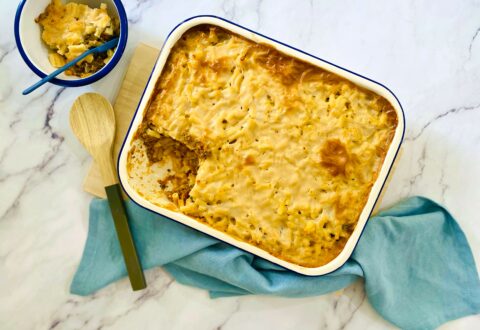
Register your interest
"*" indicates required fields


